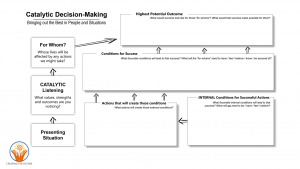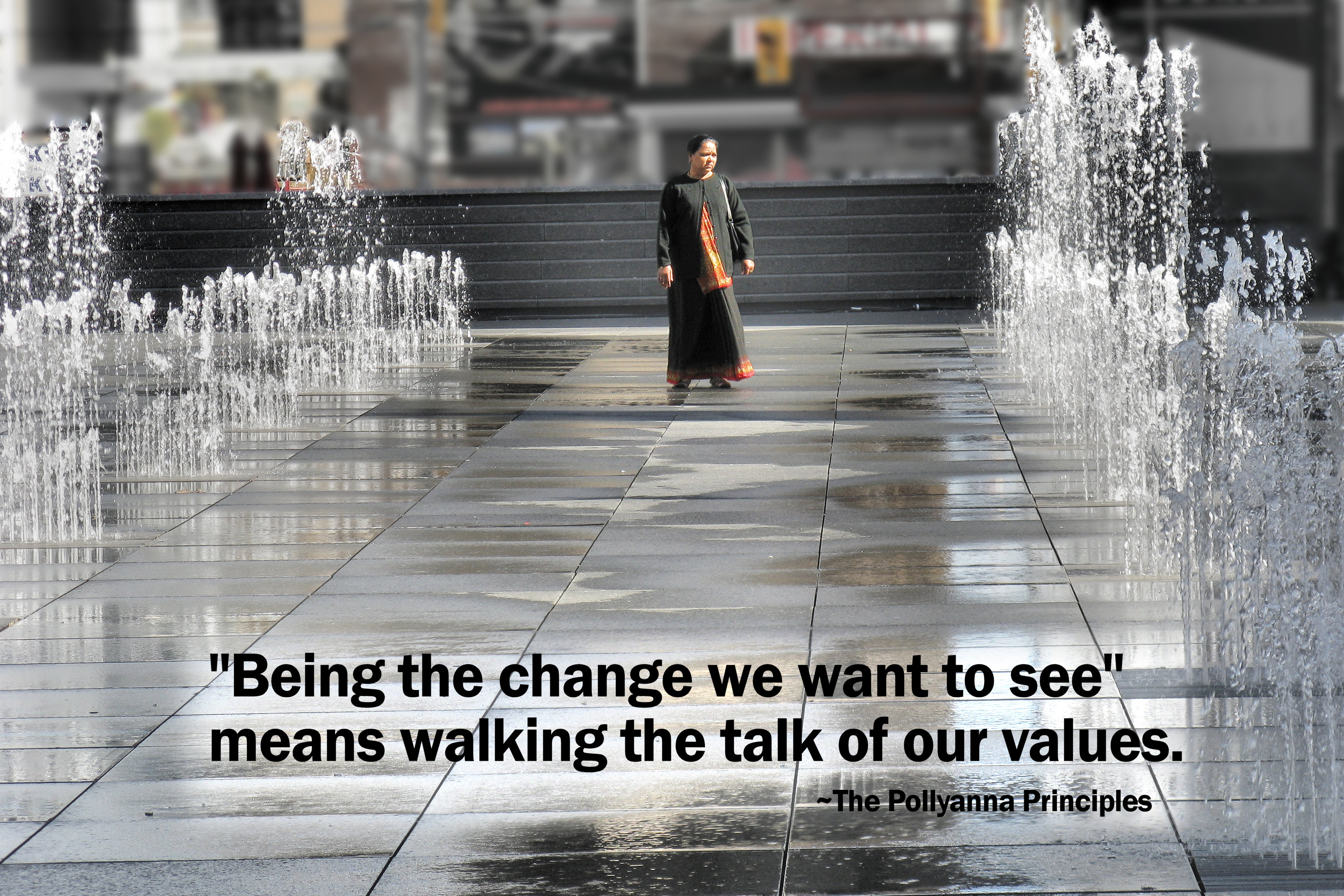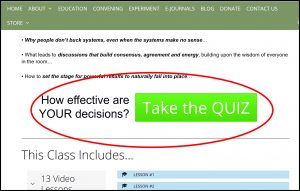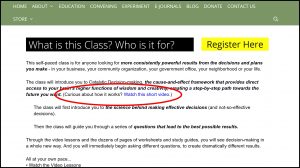This week, Creating the Future will begin developing a communications strategy, to move our work to the next level. (You can watch or participate in that session here.)
Because we will use Catalytic Thinking to develop that strategy, you may notice that some of the questions we ask feel different from questions posed in traditional marketing, public relations or communications.
This post is therefore intended to give you some insights into those differences, and importantly, the reasoning behind them.
Background on Catalytic Thinking and Why We’ll Be Using It
Catalytic Thinking is a framework for bringing out the best in people in any situation, leading to high potential results. The questions at the core of this framework aim at what is possible (vs. reacting to what is wrong). They are inclusive, aimed at building alliances and sharing resources (vs. competing and hoarding resources), to accomplish together what no one group can accomplish on its own.

Catalytic Thinking focuses on “thinking” because the results we see from any effort begin with our thoughts and assumptions. When the questions we ask are intentionally crafted to bring out the best in people, we are able to leverage every action we take for the best possible results.
You can read more about Catalytic Thinking here.
Why It’s Important to Change the Questions for Social Change Communication Strategy
While some people contend that creating community change (or running a government, for that matter) is just like running a business, in reality there are two core differences between a business and a social change effort. First, their purpose is different. And second, the parties who receive the benefit of that purpose are different.
For a business (and for the marketing systems used to enhance that business), money is the end goal. The people who receive the benefit of the business are the owners. Any other people – customers, employees – are simply means to the end of that privately-owned financial result.
In social change activities, people and values are the goal. For organizations seeking to create a more humane world, those values include equity, inclusion, openness, health, and resilience (just to name a few). For these activities, money is a means used to achieve those PEOPLE-focused, VALUES-focused ends. And the beneficiaries of those end results are the people in the community served by that organization.
Business
Ends: Money / Profit
Means: People (customers, employees)
Beneficiary: Private Owners
Social Change
Ends: People and core values
Means: Money
Beneficiary: Community
The impact of those opposing factors is huge. Because social change results are about people, values, and community, a cause is more likely to be successful if it holds people and core values as sacred. We have all seen too many social change efforts torn apart by folks working in ways that go counter to the values they espouse.
A simple example is the domestic violence organization whose board is so abusive that the staff forms a union to protect themselves. (And yes, that is a real story from my home community.) How long will it take before community members – the beneficiaries – start asking, “Why should we support you to create a more peaceful, respectful community when you can’t even respect each other?”
Therefore as we develop and implement our Communications Strategy, we will walk the talk of the world we are trying to create, embracing our interconnectedness with each other and our planet. The values we intend to demonstrate include…
• Inclusion • Openness • Linking arms
• Sharing • Creating alliances • Engagement
What all this will look like in practice
There are a few key differences that will guide our strategy to walk that talk. Those differences include…
• Reaching for the highest potential outcome
• Embracing a broad audience
• Moving from Competition for Cooperation
 The graphic at the right shows the flow our questions will take (click to enlarge the image, and to print for reference during our discussion).
The graphic at the right shows the flow our questions will take (click to enlarge the image, and to print for reference during our discussion).
Reaching for the Highest Potential Outcome
If you are accustomed to doing an environmental scan or situational analysis (perhaps a SWOT analysis) as part of marketing / communications strategy, the first thing you will notice is the absence of those questions and analyses.
The reason for that is the difference between making a plan that reacts to current circumstances vs. making a plan that reaches for what is possible. Reaching for what is possible doesn’t ignore our current reality; it just doesn’t begin with that reality. Instead, we will first reach for what is possible, asking questions about the difference we want this plan to make. Once that is clearly defined, we will reverse engineer the conditions that will lead to those results. Effective communications will be one among many other conditions for our success.
Those conditions will absolutely include today’s reality. But rather than seeing our current reality as the starting point for our discussions, today’s circumstances will instead be seen through the lens of the future we intend to create, as if we were looking back from that future. (To see more about the science behind this approach, watch this video. And to see the results of this approach, watch my TEDx talk here.)
Guiding us to create what is possible, our questions will include:
• What do we want our communications strategy to make possible? And possible for whom?
• What difference do we want this communications strategy to make? What will that make possible, and for whom?
• What high potential outcomes do we want to see from this strategy? What will those outcomes make possible, and for whom?
Embracing a Broader Audience
In traditional marketing / communications strategy, once the goal of the plan is determined, planning questions immediately guide us to narrow our focus on our “target audience,” asking questions such as “Who is the most important audience for us to connect with in order to accomplish that goal?”
Again, the order and context in which we ask that question makes a huge difference. Using Catalytic Thinking, we will only narrow our focus when we are at the point of determining which actions to take. As we begin our planning, we will keep the context broad, asking about the people who will be impacted by any actions we take, whether they are our intended audience or not.
This is hugely significant, because those individuals will be affected whether we are intending to affect them or not.
If we ignore them, we are virtually guaranteeing unintended consequences. In social change, the result of those unintended consequences could have big impacts on the lives of real people. That makes this question urgently important, because we can avoid many of those unintended consequences if we are simply mindful of the people who will receive the message we are going to be transmitting, intended audience or not.
In addition, if we are mindful of the effect of our communications on ALL people who may hear / see them, we can often make small adjustments in our plans that will allow us to embrace those individuals without losing our focus. And that has the potential to significantly broaden the ripples of our mission.
Here is an example of what that looks like in practice.
Consider the Learning Opportunities pages for Creating the Future’s click-and-play classes. (Check out an example here). Most people might call those sales pages or promotions pages.
Now let’s consider the people who will see that page. Of that number, is it likely that the vast majority will buy the class? Probably not.
Because our mission is not to sell classes, but to educate as many people as possible, we realized that if we only focused that page on people who are ready to buy our classes, we would lose the opportunity to engage the vast majority of people who will see it!
What you will therefore see when you get to that page includes, for example, a quiz to get people thinking.
You will also see a link to a video that introduces people to the framework.
Those pages have become opportunities to learn, not only if you buy the class, but for all the people who will come there and not buy the class. That will further our mission, way more than if we were only focused on selling a class. And we could not have arrived at that approach had we not asked about everyone who would see that page vs. solely focusing on our target audience.
As we noted in the previous section about acknowledging the current reality, we will not be ignoring the need to narrow our focus; we just won’t begin there. If we narrow our focus too early, we will be missing out on the opportunity to accomplish our mission in the most inclusive way possible.
By instead acknowledging everyone who will be affected by our messages and honoring them, the very act of strategy development becomes an act of meeting people where they are, and inviting them to become part of our community. And that inclusion is the most powerful road to accomplishing our mission!
Guiding us to be as inclusive as possible, our questions will include:
• Who will be impacted by this plan? Who might see our communications?
• What could seeing those communications make possible for those individuals?
• What might be different for those individuals, if they see / hear / are engaged by those communications?
Moving from Competition to Cooperation
Lastly, you will notice that we will not be talking about differentiation. In traditional marketing, differentiation is the question that defines why you should buy Coke vs. Pepsi, or McDonald’s vs. Burger King.
Translated into the social change arena, those questions sound like this: “Who is doing work similar to you, and why are you better than them? What sets you apart from others doing similar work? Why should people give their attention, their time, or their money to you rather than that other group?”
For creating social change, this zero-sum, win-lose mindset leads to silos, divisions, and mistrust. That is the exact opposite of the kinds of alliances that are needed to accomplish any social mission. Social change requires allies, people with whom we can link arms to create an army for change. If one group is the only one left standing, nothing will change.
Questions that create an inclusive context allow us to see all the interrelationships that are our Social Change Superpower.
Guiding us to create relationships, our questions will include:
• Who else cares about what we care about? Who else is working on the issues that we care about and want to impact?
• What will it take for us to communicate with, engage with, and work alongside those individuals and groups?
* * *
We hope this brief introduction helps guide you as you watch or participate in our communications strategy meetings. And we hope it entices you to try this approach in your own efforts to gain support for your cause.



